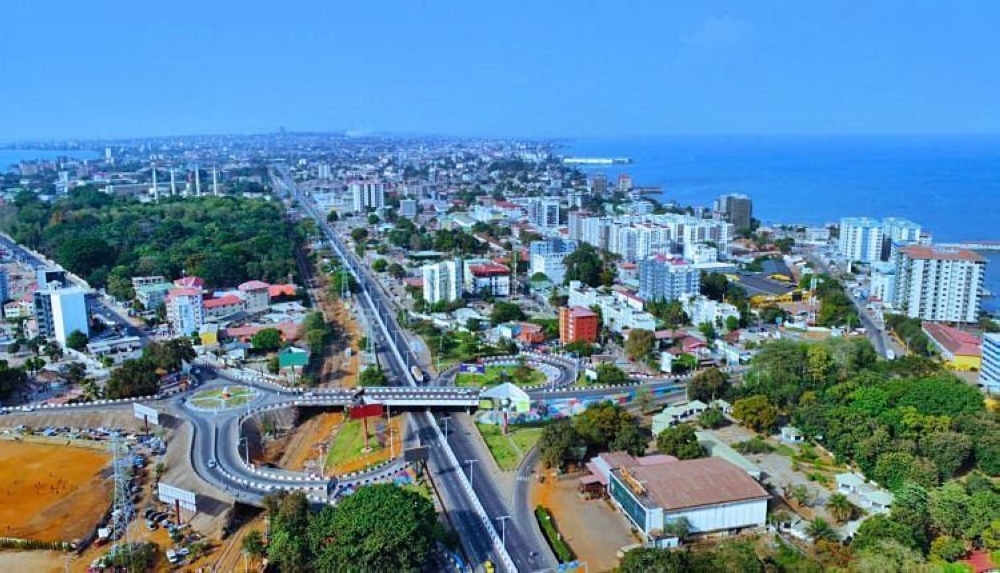

The President of Guinea, Mamadi Doumbouya, is in Rwanda for a three-day official visit that started on January 25, to cement relations between his country and Rwanda.
But what do we know about his country, where is it, and what does it have to offer?
ALSO READ: Kagame, Doumbouya commit to greater ties between Rwanda, Guinea
Size and population
Guinea is an African country that is located on the western coast of the continent. It borders the Atlantic Ocean to the west, Guinea-Bissau to the northwest, Senegal to the north, Mali to the northeast, Cote d&039;Ivoire to the southeast, and Sierra Leone and Liberia to the south.
Its capital and largest city, Conakry, is located on the Atlantic Ocean – as a peninsula city.
It is sometimes referred to as Guinea-Conakry after its capital Conakry, to distinguish it from Guinea-Bissau and Equatorial Guinea.
Its total area is 245,857 square kilometers, its population was estimated at 13.53 million in 2021, according to the World Bank.
Economy at a glance
Its gross domestic product (GDP) was $12.6 billion in 2019 with a GDP per capita of $926, as per Private Investment Promotion Agency (APIP), a Guinean public entity whose mission is the implementation of the government's policy on the promotion and development of domestic and foreign private investment.


The International Monetary Fund’s estimates suggest that the country’s GDP was estimated at more than $23 billion in 2023, with a GDP per capita of $1,542.
Natural resources
Guinea is recognised for its great mineral wealth such as bauxite, iron, gold and diamonds, among others.
The mining sector, reports indicate, currently represents more than 85 per cent of exports and provides around 20 per cent of public revenue.
The country is endowed with mining resources including bauxite (the primary ore or mineral used for the production aluminum), iron, diamond, gold, and minerals and base metals (limestone, copper, lead, zinc, cobalt, manganese and nickel, among others.)
Guinea has the largest bauxite deposits in the world with 40 billion tonnes of which at least 1 per cent are exploited. The country also has 30 million carats of diamond reserves available in primary and secondary deposits, largest unexploited iron deposits in the world with 20 billion tonnes of reserves, and gold potential estimated at 700 tonnes of reserve.
Language
The country has different local languages including Soussou, Malinké, Poullar, Kissi, and Guerzés, but French is studied in schools and is the main business language, according to APIP.
Agriculture
As the country's largest employer, the agriculture sector plays a key role in poverty reduction and rural development, providing income for 57 per cent of Guinea’s rural households, and employment for 52 per cent of the labour force, data from Word Bank indicates.
APIP indicates that the country has 13 million hectares of cultivable arable land, and abundance of water with 1,165 rivers including three of the five most important rivers in West Africa; the Niger River, Senegal River and Gambia River.
Guinea has significant agricultural, pastoral, forestry and fishing resources capable of ensuring its food self-sufficiency and raising it to the rank of exporting countries. Guinea invites investors to explore investment opportunities in this sector by developing the agri-food value chain.
Tourism
According to APIP, investment opportunities in the country’s tourism sector include construction of international hotel chains, development of ecological tourism, investment in entertainment service facilities such as amusement parks, sports areas, places of worship, theatres and cinemas, shopping centres, clubs and specialised restaurants, as well as beach development in accordance with international standards.
The country has coastal sites such as the Loos Islands, a group of islands located between 4.5 and 14 kilometers off the coast of Conakry, according to Guinea’s National Tourism Office.
It also has historic sites such as the Faycal Mosque of Guinea. Today, despite the construction of several mosques in Africa, it still remains among the largest mosques in West Africa and an architectural jewel for the Republic of Guinea.


